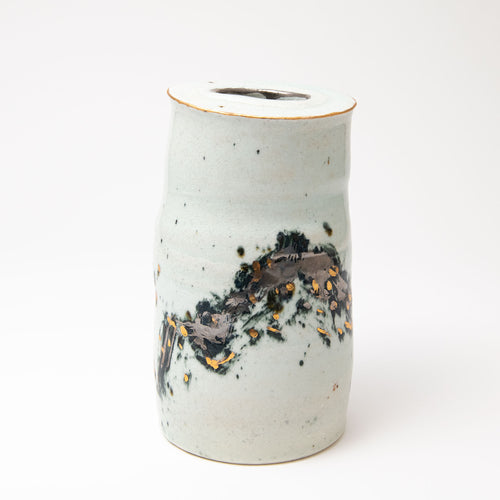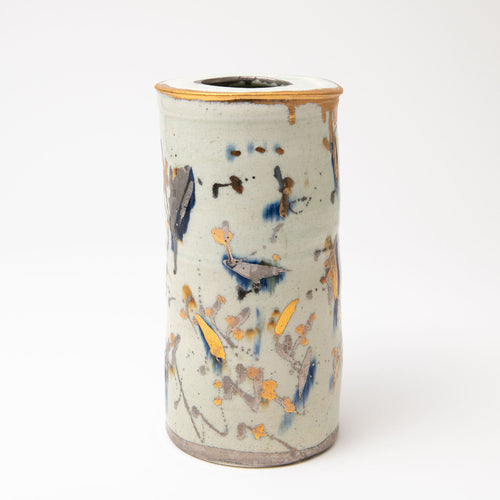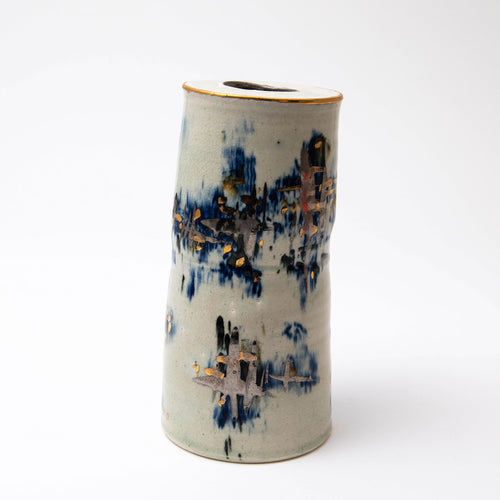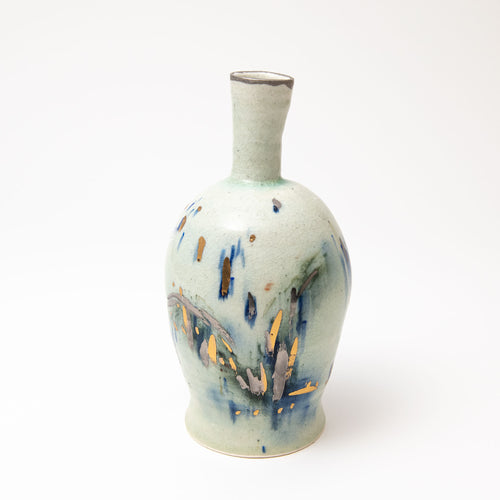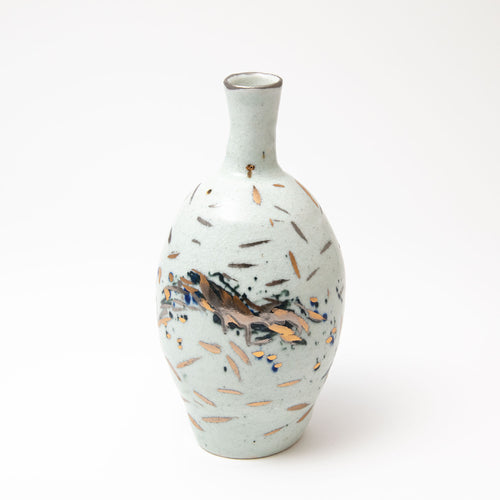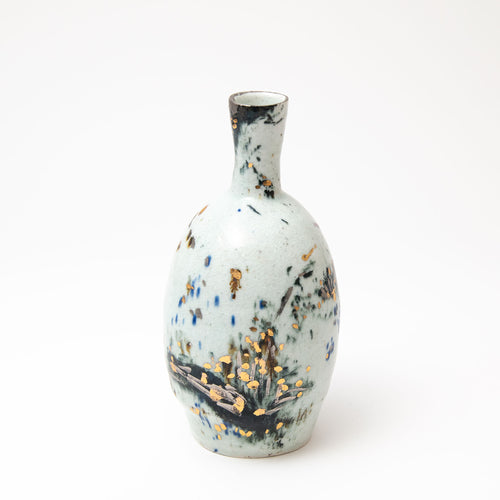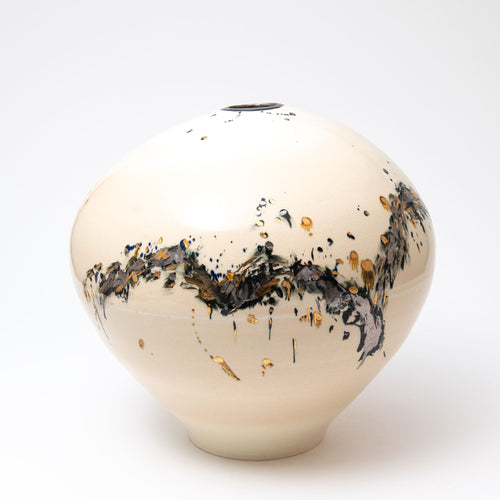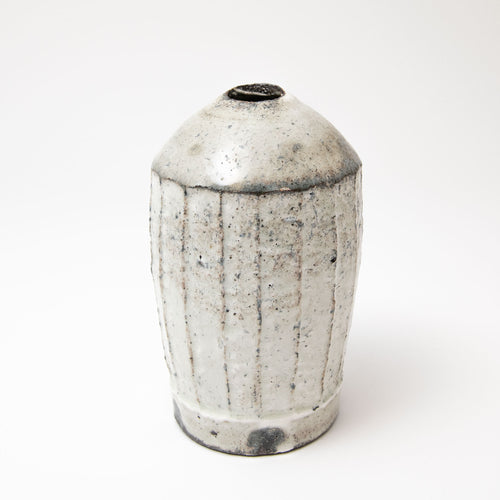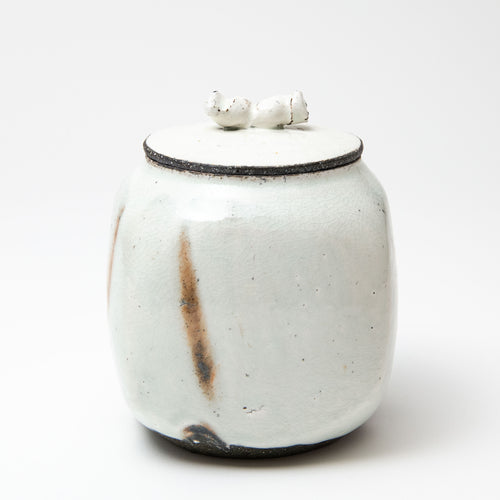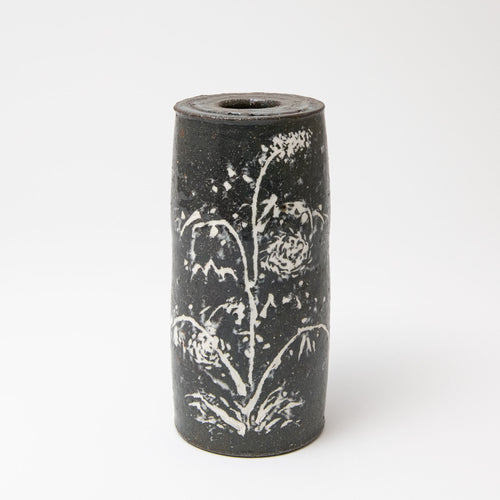In Korea's ancient past, the colour white - the white of the life-giving sun, and the measured wax and wane of the moon - assumed symbolic significance. Far from just reflecting Confucian purity or Buddhist void, white has remained a colour of resistance in Korea's fractured past - and in its recent present. How the colour of light, snow and shamanic dance has shaped the Korean nation...

Kang-hyo Lee's wheel at his studio in South Korea
Sister Sun and Brother Moon
There is an old tale in Korean folklore of a tiger who met a poor lady walking home. She had been working at a rich household, providing a dinner of rice-cakes. The hungry tiger demanded a cake, or he would sate his hunger with the woman herself. She obliged, only for the tiger to reappear at the very next hill and demand the same again. Eventually, with no rice cakes left to give, the lady begged the tiger not to eat her, for she had two children to look after – but the tiger was ravenous, and devoured the woman, leaving only her clothes and a dusty basket.
Discovering the woman’s home, the tiger disguised himself in her dress and knocked on the door, but the brother, Haesik, and his little sister, Dalsun, saw through his disguise. This time, the tiger dusted his paws in the rice-cake basket until the were white and tried again. Little Dalsun opened the door, and the tiger burst through.
A chase ensued, the tiger running the children ragged around the house, outdoors and to the base of a huge tree. The children climbed, the tiger followed. Haesik and Dalsun then prayed to the heavens above to save them, and were rewarded with a great chain which they climbed until they were high in the sky. The tiger did the same, praying to the gods for a rope so that he could catch his prey. Down came a worn straw rope, and as the tiger climbed it, the rope snapped and the tiger fell to the ground below. He landed in a sorghum field, the red of his blood and his bright red stripes staining the millet around him red. Haesik, the brother, became the sun, and his sister, Dalsun, the moon, but she was shy and afraid of the dark. So they swapped places: Dalsun now shines with the whitest light, to blind the people below to her appearance, while Haesik illuminates the night sky with the light of the moon.

Men’s outer coat, National Folk Museum of Korea
The White that Clothes Korea
Variations of this tale, and countless others describing and celebrating the creation of the celestial spheres, are common in Korea. Here sun and moon worship have long persisted, and the theme of the white light of the heavens suffusing the native landscape – the white of the sky, of clouds, of snow on the mountain ranges that cut across the country, of the morning fog that descends along its valleys, or reflects off the rivers that carve their way right through them – has become part of the Korean visual identity.
Soon the white that cloaked the Korean landscape was adopted by its people to clothe themselves. For at least 2,000 years, Koreans have worn white garments, in attire that became so ubiquitous that they became known as the baek-ui-min-jok – ‘the pious white-clad folk’. Baek, meaning white, derives from words for ‘brightness’: it is the essential colour of the sun, assuring plentiful yield, and of the moon, by whose calendar the harvest could be tracked. In later Confucian society where elite cultural status was indicated by the colour of your robes, white was the colour left for everyday folk: the white of unmodified cotton or linen hemp. The sight of peasant workers in white hanbok (literally ‘Korean clothing’) bent over lush green fields became a common trope of foreign traveller’s diaries. On the one hand, this ‘white’ was simply a sign of poverty: a lack of money to afford costly dyes. But more importantly, it seemed to reflect the complex religious and spiritual melange that grew in the early years of the first millennium: native Shamanism and Buddhism blending with Taoism, Yin and Yang, Chinese elementalism and Neo-Confucianist philosophy. White was the colour of the Buddhist void, of Confucian asceticism, the abnegation of desires, and the suppression of emotion: a colour of formality, moral rigour, and spiritual purity. Unlike the colourful robes of the court, the simui, the Confucian scholar’s gown, was a simple white cloth with a black collar, symbolising the individual as a microcosm of the universe itself, bound by the laws of man and nature alike.
Buncheong and Baekja
Buncheong was, for but a brief period, the chosen white ceramic of Joseon dynasty Korea (from the late 14th century). Though popular, like the tiger of the sun and moon myth, it was essentially a triumphant impostor. Initially, buncheong wares were made to imitate old Goryeo dynasty celadons, which were themselves an imitation of beloved jade. Then, as porcelain gained dominance across Asia and demand for pure white pottery spread throughout the world, buncheong temporarily became a favourite mock-porcelain. The term from which we derive the name, bunjang hoecheong sagi, is a more or less literal descriptor: it translates as ‘grey-green ceramics decorated with slip’, but the name itself was 20th century invention. Until that time, these familiar pots had apparently been produced without official designation, though they were produced at times for official government use.
At the heart of buncheong is an engaging irregularity, a daring, a sense of risk: the best work that has survived has an earthy subversiveness to it, quite unlike our Confucian conception of the colour white as pure, expressionless, void of emotion and complication. Unlike the baekja (‘white ware’) porcelain produced en mass during the Joseon dynasty with oversight of the imperial court, buncheong was never centralised. A thoroughly adaptive and individual medium, buncheong took on regional variation: it could be inlaid, scored through, or incised to create decorative floral motifs, like the famed celadons it was mimicking. And though it pretended to a white as pure and honourable as its imperial brother porcelain, its dark, iron-rich clay always threatened to breach the surface of the slip and taint it with its characteristic peachy overtones – like the red fur of the tiger, hiding beneath a layer of white dusting.
Just as Confucianism supplanted Buddhism as Korea’s state religion, buncheong was replaced with baekja by the end of the 16th century, and with it a conflicted philosophy of frugality, pragmatism and stoicism which the pure, austere and unembellished porcelain clay seemed to embody: innocent, noble, self-reflective in its whiteness. When Japan invaded the Korean mainland in 1592, thousands of Korean buncheong potters were captured and taken abroad. It continued life not in Korea, where porcelain now dominated, but in Japan, living on in adaptation: the first of many colonial victims. Like the countless Moon Jars taken from the country during later Japanese rule and sold to collectors seduced by their milky, irregular perfection, much of the best buncheong can be found in public collections around the world. Contemporary Korean buncheong makers are, quite literally, returning the art form to its roots.

Kang-hyo Lee, Moon Jar, Sky
Land of the Morning Calm
Though white hanbok is rarely seen in Korean society today, the historical persistence of white in its ceramics was matched by a persistence in dress right up to the early years of the 20th century. Attempts by imperial families throughout Korea’s history to ban white clothing for the masses were largely ignored, and when in 1895 the Korean people were ordered to adopt Western dress, many protested the change. Traditionalists were likely fighting a losing battle as open trade brought Western trends flooding into the country, but curiously, the less white hanbok was worn, the more potent, symbolic and resistant its associations became. During the Japanese colonial occupation of Korea from 1910, white clothing was once more banned: the Korean people, Japanese officials remarked, appeared to be clothed in their mourning garments, mourning the inevitable death of their nation. The very opposite was true: as protestors took to the streets in an enormous demonstration against their occupying aggressors in March 1919, they took up their old white hanbok as a symbolic uniform for Korean independence.
When he learnt of the fate of the Korean March for Independence – thousands butchered, beaten up and arrested – the Japanese scholar Yanagi Soetsu wrote apologising for the desecration of Korean heritage at the hands of his fellow countrymen, and declaring his profound love for Korean art. ‘Korea is now in the sad throes of a profound agony,’ he wrote. ‘In spring the plum trees refuse to bloom. The unique culture of Korea fades further into the past, disappearing from its place of birth…they shun the sunlight, gathering in shadowy places…Seeing the darkness that shrouds you, body and soul, I cannot help being moved; there are times, I am sure, when you shed tears of blood.’
Yanagi long felt that the ‘white culture’ of Korea had represented a kind of native, tragic aesthetic of grief, taking their white clothing as a sign of citizens in daily mourning. ‘It is an art that yearns for human kindness, that longs to live in love. It has been permeated by aeons of cruel history, by ages of forlorn sadness. It is the beauty of sorrow, evoking lonely tears. No other art is permeated by such pathos…Whenever I gaze at the porcelain sitting on my desk, I feel I can see the tears of its maker shadowed in its quiet gaze.’
Korean scholars have since baulked at Yanagi’s ‘sorrowful’ theory, as if to suggest that colonial servitude was their lot by fate and even innate to their national identity. But Yanagi also recognised in the Korean art he admired an un-artificiality, or a lack of technical ‘refinement’. Its pots and handcrafts, he said, were ‘born not made’, the product of a natural and ‘instinctive faith’. Whatever he saw symbolised in the Korean love of white, it was not as a chosen colour so much as an acceptance of the natural colourlessness of their materials, a love of non-decoration: white as absence, embodiment of nature, the innate white of ‘the land of the morning calm’.

Lee Kang-hyo applies Buncheong slip to bowls in his studio
The White Dance
Yanagi’s desire that Korea should know the ‘human warmth and kinship’ he saw reflected in its art did not materialise. Liberation from Japanese colonial rule was swiftly followed instead by the civil war that tore the country in two. While economic prosperity in South Korea grew quickly in its wake, rule by dictatorship persisted well into the late 1980s, ending only under immense public pressure.
After occupation, war, and the weary process of rebuilding the country from rubble, there remained little evidence of the once ubiquitous, traditional white dress by which Koreans had long been recognised. But now a new ideological border between North and South, and an increasingly important global presence, moved Koreans both sides of the divide to look to the past for collective unity. Just as it had been during Japanese rule, white hanbok would return as a powerful symbol of solidarity and resistance in South Korea, coupled with another major growing cultural interest: the revival of traditional Korean dance.

Lee Ae-ju, expert in Korean dance, dances for a student vigil during 1987 democracy protests in Seoul, South Korea
Like the preservation of crafts in Japan, traditional dance practitioners became known as holders of ‘Intangible Cultural Properties’ and two forms of dance were to become vital in modern Korean exploration of its past: seungmu, the ‘monk’s dance’, an old, hypnotic ritual form performed in a white cowled robe with huge extended sleeves and accompanied by percussive drum beating, its taut, round skin set to look like the moon; and salpuri, a supposedly ancient Shamanistic dance designed to drive off malignant spirits.
Artists like Lee Mae-Bang, the most famous and prolific of Korea’s traditional performers, were vital in preserving and reinventing the old forms. But it was the adaptation of dance to democratic protest that was to play an extraordinary part in Korea’s recent history. An official holder of seungmu status, Lee Ae-ju dedicated her life to modern adaptations of traditional dance. As a professor at Seoul National University – the site of violent suppression of student protests – she had witnessed up close the heavy hand of the riot police. Across the summer of 1987, she performed an impromptu programme of shamanic dances memorialising the fallen students Park Jong-Chul and Lee Han-Yeol, both killed as a result of their protest: writhing, stamping, leaping before the crowd, with a patch of red blood staining the heart of her white robed dress, her performance of the ‘Dance to Console the Dead’ defined the end of an era in Korean politics.
Accompanying several of her performances was an itinerant band of percussion musicians who performed their own form of traditional Korean song: the Samul Nori, field music involving increasingly wild, pulsing percussive rhythms. Few know much about this folk music; its revival was more or less concurrent with that of Korea’s traditional dance. But if you have ever watched the mesmerising footage of Lee Kang-hyo decorating his enormous Onggi pots, clothing their red clay surface in ladlefuls of white slip, you will have heard the sound of Samul Nori, Kang-hyo’s making music.
The energising power of the natural world that Kang-hyo derives in his own performance takes us back to the beginning of Korea’s white history: to what Yanagi called ‘the essential rhythms of human life, in their most unadorned form, appearing in constantly undulating curves. They are the spontaneous pulsations of life, recalling the natural rhythms of the winds that blow, the streams that flow, and the clouds that rise into the air.’ Yanagi was here describing Korea’s white slipped pots – the buncheong ware Kang-hyo has modernised and revitalised for the 21st century. And in his continuation of this ancient tradition, the old white of Korea continues to adapt and surprise: to convey stillness and dynamic movement, fragility and strength, peace and resistance with every fresh application.

